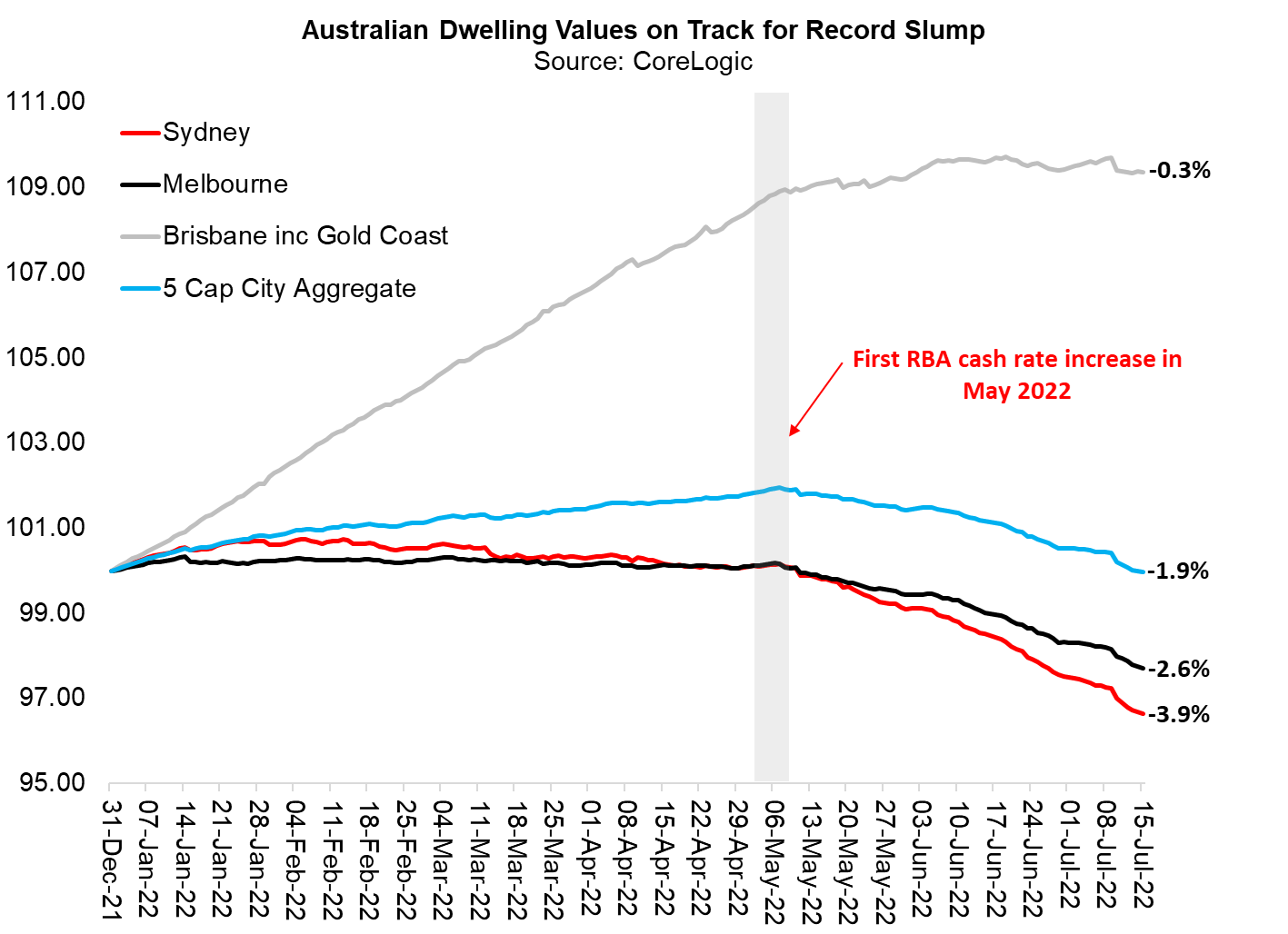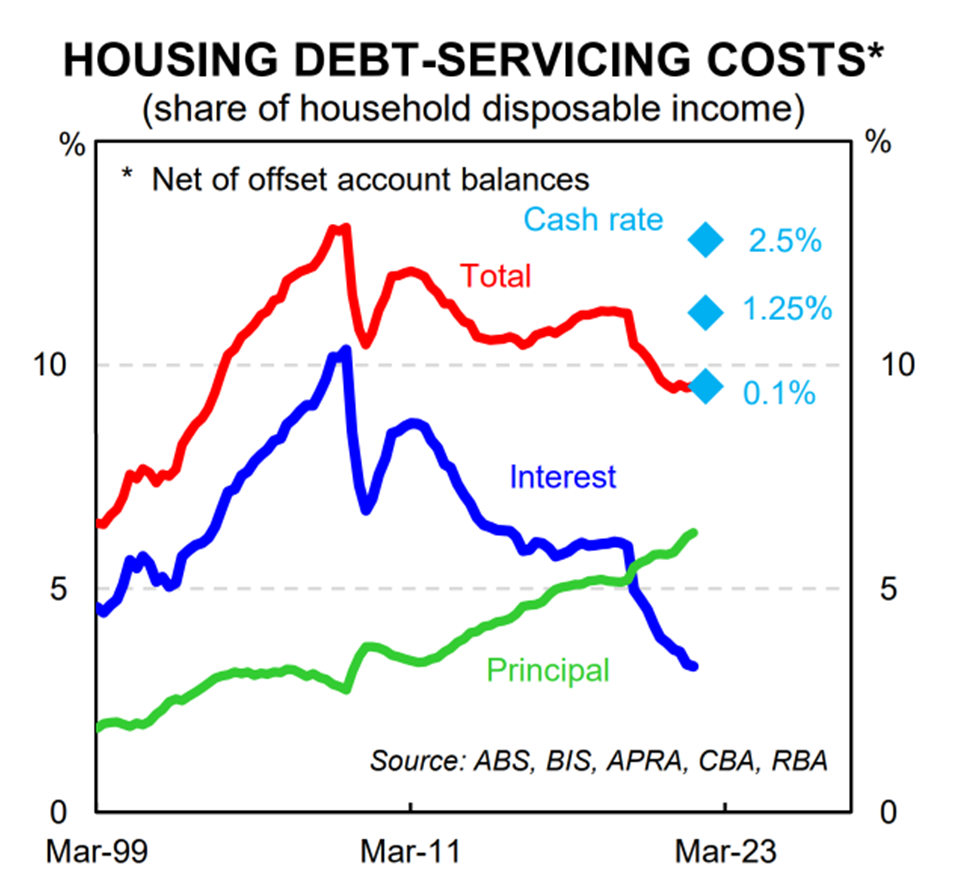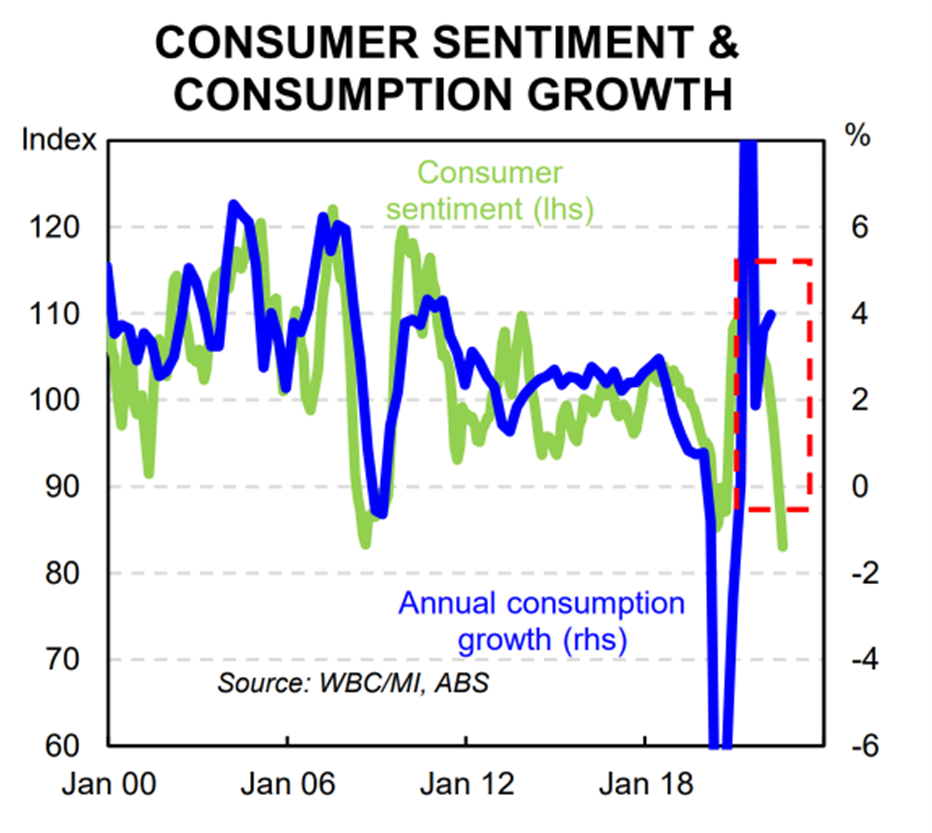Brisbane home values start declining as Sydney losses hit circa 4%
Home values in Brisbane are slowly rolling over and following in the footsteps of house prices in Sydney and Melbourne, where the losses continue to accelerate. With data now available from CoreLogic on dwelling value changes through to 15 July, we find that the cumulative losses in Sydney are about to exceed 4% on a peak-to-trough basis in a very short period of time. Melbourne is not far behind with total losses approaching 3%.
What is also clear in the chart below is that the first RBA cash rate hike in May 2022 broke the Aussie housing market: there is a striking structural change in the pace of house price declines that coincides almost exactly with the RBA lifting its cash rate by 25 basis points in May. Following the super-strong jobs data during the week, the RBA is now all but certain to hike rates by 50 basis point for an unprecedented third consecutive month in a row in August. This will mean that variable-rate mortgage costs will have increased by a seemingly incomprehensible 175 basis points (or 1.75 percentage points) in just three months (or over four RBA meetings).

With consumer sentiment at GFC/March 2020 lows, CBA economist Gareth Aird explains that the RBA is imposing a truly extraordinary interest rate shock on unsuspecting Australia borrowers (who had been told by the RBA that rates would not increase at all until 2024) in response to backward-looking inflation and employment data:
We now expect the RBA to raise the cash rate target by 50bp at both the August and September Board meetings. This would see the cash rate target at 2.35% in September. If the RBA delivers 100bp of tightening over the next two meetings it would mean that the RBA has taken the cash rate up by 225bp over just four months (five meetings). This would represent an incredible pace of tightening, particularly given the starting point was a cash rate of just 0.10% and household debt sits at a record high as a share of income (Australia has one of the most indebted household sectors in the world). The impact on households with a mortgage will be very significant given the percentage change in the mortgage rate will be incredibly large...
The total stock of household debt has not disappeared (or been paid down) and borrowers are facing a very large percentage change in the interest cost on their debt. Fixed rate borrowers will be rolling off an average fixed rate mortgage of around 2¼% onto a rate around 4½-5% in 2023 based on our forecast profile for the cash rate. This will result in a very big step change in the interest cost on debt (for context, mathematically moving from a mortgage rate of 8% to 16% is the same as 2¼% to 4½% in terms of what happens to the interest cost on debt; it doubles).


Access Coolabah's intellectual edge
With the biggest team in investment-grade Australian fixed-income and over $7 billion in FUM, Coolabah Capital Investments publishes unique insights and research on markets and macroeconomics from around the world overlaid leveraging its 14 analysts and 5 portfolio managers.
2 topics

